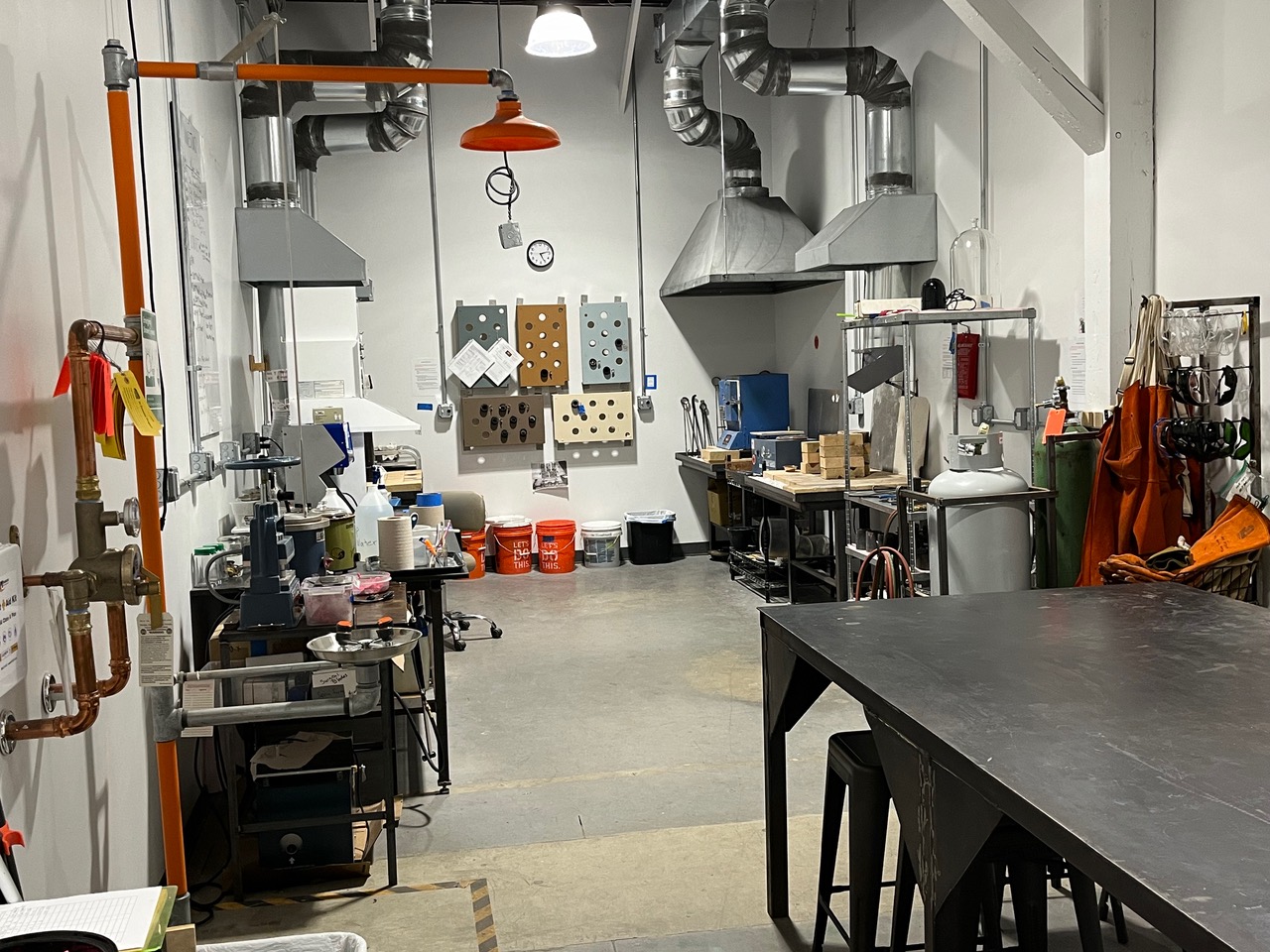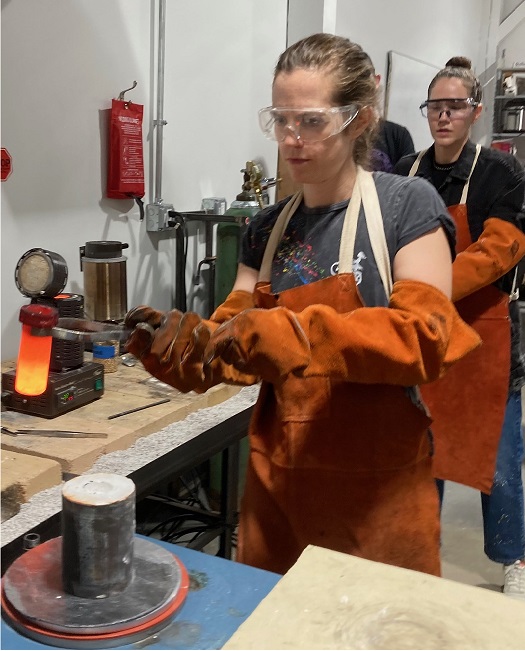Category:Casting Shop: Difference between revisions
No edit summary |
No edit summary |
||
| Line 28: | Line 28: | ||
== Safety: == | == Safety: == | ||
{| class="infobox" cellspacing="5" style="width: 22em; text-align: left; font-size: 88%; line-height: 1.5em;" | {| class="infobox" cellspacing="5" style="width: 22em; text-align: left; font-size: 88%; line-height: 1.5em;" | ||
! colspan="2" class="infobox-image" | [[File:buddy_up.jpg| | ! colspan="2" class="infobox-image" | [[File:buddy_up.jpg|200px|Buddy Up!]] | ||
|- | |- | ||
| colspan="2" | Buddy Up! | | colspan="2" | Buddy Up! | ||
| Line 36: | Line 36: | ||
Precautions are similar to those for welding. | Precautions are similar to those for welding. | ||
'''Link to:''' [[Casting Shop Safety]]] | '''Link to:''' [[Casting Shop Safety]]] | ||
== WORK WITH A BUDDY! == | |||
Two people are required for melting and casting metal in the shop. One tends the metal while the other manipulates the molds and operates the vacuum caster. All other shop operations can be performed solo. Handling molten metal poses a risk of very serious injury, and a buddy may be needed to call 9-1-1 if necessary. | |||
Revision as of 20:40, 8 November 2023
Description:
People use the casting shop to make small metal castings for jewelry, sculpture, and engineering in gold, silver, and copper alloys. Facilities include: Investment bench, sand-casting bench, kilns, vacuum caster, oxy-propane torch, wax-working bench, vulcanizer. (Links to tool resource pages) Classes in lost-wax casting and sand casting are offered. (Links to class listings)

| |
|---|---|
| Casting Shop View |
Casting Techniques:
Lost-wax casting: Starting with a wax pattern, shop users make molds in gypsum-based investment. Molds are heat-treated in a kiln and then cast in metal with a vacuum-casting machine. Picture: \Main_page_pix\lost_wax_pour.jpg (Link to lost-wax casting class listing)
Sand-casting: Durable patterns are pressed into oil-bonded sand to make a mold that can be cast in metal with no heat treatment. (Link to sand-casting class listing)
Rubber molding: Durable, nonporous patterns are molded in heat-vulcanized rubber to be reproduced in wax with a pressure-injector.
Tools:
Vacuum caster: This machine pulls air through the pores of a lost-wax mold to draw the molten metal into fine detail during casting. RED tool: Tool-testing required. Located under the hood against the south wall. Link to: Vacuum Caster Tool Resource Page
Sentry Kiln: For heat-teating and burn-out of lost-wax molds. RED tool: Tool-testing required. Programmable controller, temp limit: 1350 F. Link to: Sentry Kiln Tool Resource Page
Electromelt furnace: For melting metals to cast. RED tool: Tool testing required. Removable graphite crucibles for different metals, including gold, silver, argentium (Ag-Ge), bronze, brass. Temperature limit: 2000 F. Link to: Electromelt Tool Resource Page
Safety:

| |
|---|---|
| Buddy Up! |
There are significant hazards in this lab. Molten metal can cause very severe, crippling burns. Eye protection, closed-toe shoes, dust masks, hot gloves, aprons, must be worn at various times when tools are in use. Dust contains crystalline silica! Dust masks required. Precautions are similar to those for welding. Link to: Casting Shop Safety]
WORK WITH A BUDDY!
Two people are required for melting and casting metal in the shop. One tends the metal while the other manipulates the molds and operates the vacuum caster. All other shop operations can be performed solo. Handling molten metal poses a risk of very serious injury, and a buddy may be needed to call 9-1-1 if necessary.
Pages in category "Casting Shop"
This category contains only the following page.